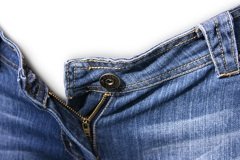Blue Jean Insulation
Comfy, Cozy Denim Insulation
Blue Jean Insulation. All of those denim clad hips can't be wrong.

Now your house can wear denim insulation. It's Green and Blue.. and hip too!
The green building materials market is warming up and insulation options are emerging that are more environmentally responsible.
Most denim used to make insulation is recycled from textile factories; scraps that would otherwise have been swept into the landfill or old blue jeans that are no longer wearable.
One of our favorite green building materials.
The threads are mechanically separated from each other into single cotton strands.
Other cotton fabrics are sometimes included in the mix and the fibers are then treated with boric acid.
Boric acid, which is not much more toxic than table salt, is fire, insect and mold resistant.
Advantages of Cotton Denim Insulation
- Materials - Denim insulation is composed of post industrial waste (scraps from factories) or post consumer waste (worn blue jeans).
- Non-Irritant - Soft to touch and easy to handle.
- No VOC's or Chemical Irritants - Safe for installers as well as the home residents.
- No Glass Fibers - The air and your clothes and skin stay free of glass fibers.
- Acoustical - Cotton fiber makes a superior sound barrier.
Disadvantages of Denim Insulation
- Cost - The cost of cotton insulation is similar to that of sheep wool insulation. More costly by far than fiberglass options, it'll take upwards of $80 USD to insulate a 5 square meter area with cotton.
- Transport - Not every neighborhood has a denim insulation factory within easy transport range.
- Moisture - Cotton will lose it's insulating properties if it gets wet.
Visitors to this page may also be interested in the following pages.
Green Insulation










